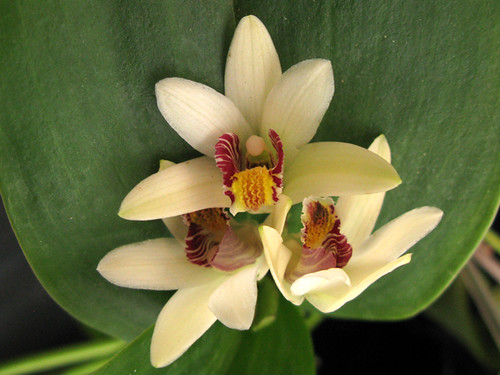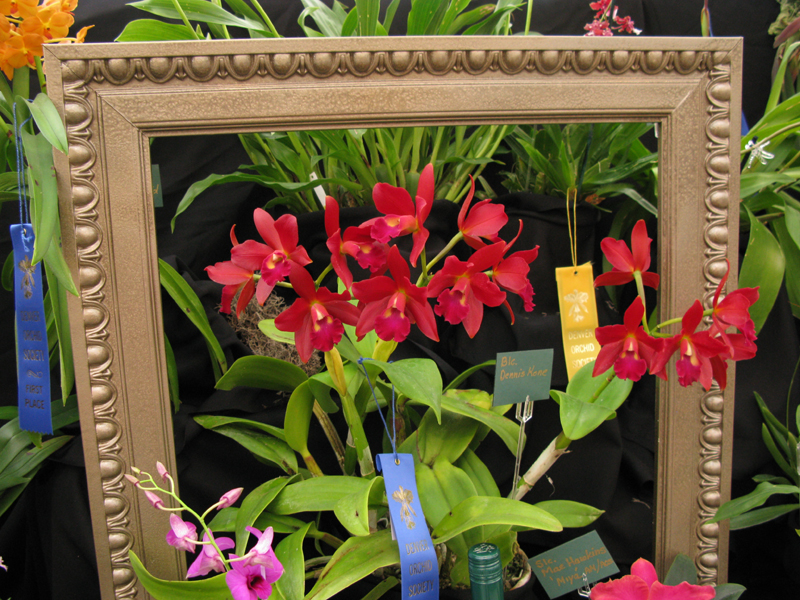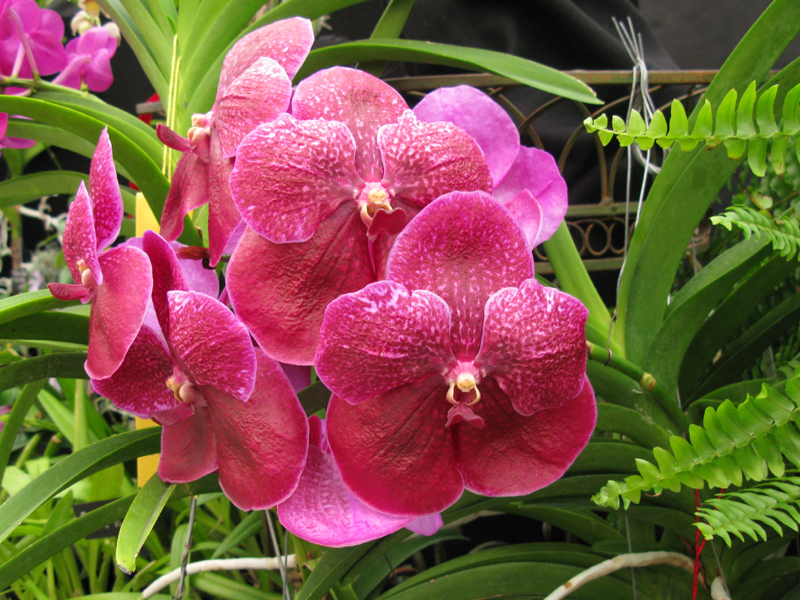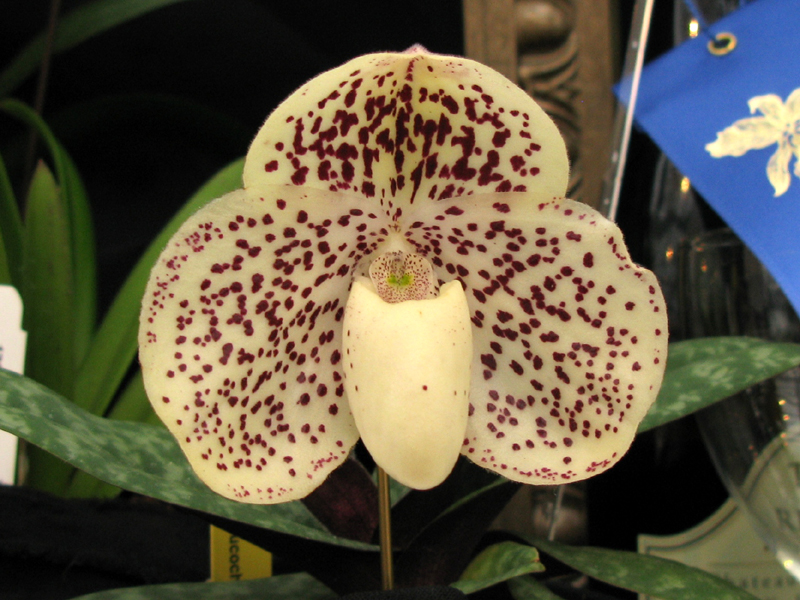
In about 50 days I'm giving birth to a PhD thesis. I just want to have a beautiful baby. Wish me luck...



















WHALE FALL
stirred by this beautiful benthic
metropolis of meat
the glaucous eye of the sleeper shark
trails a parasitic tear
- a lacrimous crustacean
the opaque unseeing eye of
the shark surveys this sunken Atlantis
a city slick with sleek silver things
slimy hagfish; one leucistic octopus
probing the blubber with tentative tentacles
the floral fimbriae of Osedax bloom
from brood sacs embedded in bone
and the fractured skull of this
clam-encrusted carcass currently
serves as headquarters for the grenadier
a curiously noble gesture, then, when the
Leviathan leaves the light for the last time
and descends to these darkest depths
and its cold cetacean body becomes real estate
for blind things made of teeth
 It's winter in the northern hemisphere and Phalaenopsis orchids are literally everywhere. The elegant moth orchid can now be found not only near the register at most garden centres, but also at your local greengrocer, favourite supermarket, and the houseplant section of many large department stores. The single best place to buy an orchid is, of course, from a local orchid nursery. Such orchids are fresh and raised under expert care. Plus, it's always a good idea to support the local hobbyists: they are often talented breeders in their own right, and make exciting and exclusive new crosses available to the community. However, sometimes those sexy Phalaenopsis at the store can be so tempting that you almost don't realize you've got one propped between the corn flakes and fat-free yoghurt, until you're unpacking your trolley at the conveyor belt.
It's winter in the northern hemisphere and Phalaenopsis orchids are literally everywhere. The elegant moth orchid can now be found not only near the register at most garden centres, but also at your local greengrocer, favourite supermarket, and the houseplant section of many large department stores. The single best place to buy an orchid is, of course, from a local orchid nursery. Such orchids are fresh and raised under expert care. Plus, it's always a good idea to support the local hobbyists: they are often talented breeders in their own right, and make exciting and exclusive new crosses available to the community. However, sometimes those sexy Phalaenopsis at the store can be so tempting that you almost don't realize you've got one propped between the corn flakes and fat-free yoghurt, until you're unpacking your trolley at the conveyor belt. I am not a total orchid snob; those store-bought plants can be rewarding. Indeed, most of them originate from giant nurseries in such places as Taiwan and Florida, where they are bred to be appealing and raised to be vigorous. Problems arise when the plants are delivered to the point of sale - supermarkets are not the best of growing environments, and store attendants tend to give the orchids the same treatment as conventional houseplants. How often have neighbours complained of the mysterious and untimely demise of their latest acquisition, mere weeks after purchase! Well, fret no more, folks! The Electric Orchid Hunter is happy to provide some essential buying tips you should know before succumbing to orchid fever in the produce aisle.
I am not a total orchid snob; those store-bought plants can be rewarding. Indeed, most of them originate from giant nurseries in such places as Taiwan and Florida, where they are bred to be appealing and raised to be vigorous. Problems arise when the plants are delivered to the point of sale - supermarkets are not the best of growing environments, and store attendants tend to give the orchids the same treatment as conventional houseplants. How often have neighbours complained of the mysterious and untimely demise of their latest acquisition, mere weeks after purchase! Well, fret no more, folks! The Electric Orchid Hunter is happy to provide some essential buying tips you should know before succumbing to orchid fever in the produce aisle.  Let's prevent further disillusionment and unwitting cruelty to houseplants. Two final pieces of easy advice that will help you on the road to success with your new moth orchid:
Let's prevent further disillusionment and unwitting cruelty to houseplants. Two final pieces of easy advice that will help you on the road to success with your new moth orchid:
 The theme for this season's show was Picture Perfect Orchids. The organizers and exhibitors put in a lot of effort to get their displays looking great, with artful use of picture frames and actual orchid art, from local artists to prints of famous works by Martin Johnson Heade.
The theme for this season's show was Picture Perfect Orchids. The organizers and exhibitors put in a lot of effort to get their displays looking great, with artful use of picture frames and actual orchid art, from local artists to prints of famous works by Martin Johnson Heade. I must admit that I was disappointed by the small amount of species orchids on display. To be fair, Colorado orchid growers face particular challenges - such as the altitude and the climate- that growers in warmer, wetter areas need never worry about. The abundance of beautiful hybrid orchids shown more than made up for this; and the species that were on display were of exceptional quality and were kinds not often seen. The substance and colours of the flowers and the immaculate condition and vigor of the plants proves that Colorado growers can beat the odds and compete with the best.
I must admit that I was disappointed by the small amount of species orchids on display. To be fair, Colorado orchid growers face particular challenges - such as the altitude and the climate- that growers in warmer, wetter areas need never worry about. The abundance of beautiful hybrid orchids shown more than made up for this; and the species that were on display were of exceptional quality and were kinds not often seen. The substance and colours of the flowers and the immaculate condition and vigor of the plants proves that Colorado growers can beat the odds and compete with the best. A table of breathtaking Vandas caught my eye immediately. This Vanda Robert's Delight 'Garnet' won a red 2nd place ribbon. It's obvious why. Those flowers are as big as my hands!
A table of breathtaking Vandas caught my eye immediately. This Vanda Robert's Delight 'Garnet' won a red 2nd place ribbon. It's obvious why. Those flowers are as big as my hands! This is one of the most beautiful examples of Vanda Rothschildiana I've ever seen. The coloration is just superb. It's a classic old hybrid between the Indian Vanda coerulea and Euanthe sanderiana from the Philippines. This rightly received a blue 1st place ribbon and the award for Best Flowers in its class.
This is one of the most beautiful examples of Vanda Rothschildiana I've ever seen. The coloration is just superb. It's a classic old hybrid between the Indian Vanda coerulea and Euanthe sanderiana from the Philippines. This rightly received a blue 1st place ribbon and the award for Best Flowers in its class. Shows are a great place to see some of the bizarre things found in the orchid family. Bulbophyllums excel at being weird. This is Bulbophyllum Jersey, a lovely cross between B. lobii and B. echinolabium which marries the best features of both parents.
Shows are a great place to see some of the bizarre things found in the orchid family. Bulbophyllums excel at being weird. This is Bulbophyllum Jersey, a lovely cross between B. lobii and B. echinolabium which marries the best features of both parents. Resembling a hard-boiled quail egg nestling on a patterned saucer, Paphiopedilum (wenshanense X godefroyae) was a joy to behold. It received a 1st prize ribbon, as well as the award for best flower in its class.
Resembling a hard-boiled quail egg nestling on a patterned saucer, Paphiopedilum (wenshanense X godefroyae) was a joy to behold. It received a 1st prize ribbon, as well as the award for best flower in its class. The best Cattleya was this delightful miniature: Sophrocattleya Mini Purple 'Candy Tuft'. Good shape, waxy substance, perfect symmetry, heady fragrance... I could clearly understand why the judges chose this as recipient of the Ed Horton Memorial Award for best flower in the Cattleya alliance. May I have a division of it, please?
The best Cattleya was this delightful miniature: Sophrocattleya Mini Purple 'Candy Tuft'. Good shape, waxy substance, perfect symmetry, heady fragrance... I could clearly understand why the judges chose this as recipient of the Ed Horton Memorial Award for best flower in the Cattleya alliance. May I have a division of it, please? This was one of my favourite things on show: Cycnoches chlorochilon. Also known as the green-lipped swan orchid, this species has a subtle, understated elegance. It is usually found in hot South American forests, from Panama to Venezuela. Not only do the flowers smell kind of like banana popsicles, but Cycnoches are also some of the few orchids to have separate male and female flowers, which are totally different in appearance. These are male flowers: if you look closely, some dislodged pollen is visible, stuck to the right petal of the middle flower.
This was one of my favourite things on show: Cycnoches chlorochilon. Also known as the green-lipped swan orchid, this species has a subtle, understated elegance. It is usually found in hot South American forests, from Panama to Venezuela. Not only do the flowers smell kind of like banana popsicles, but Cycnoches are also some of the few orchids to have separate male and female flowers, which are totally different in appearance. These are male flowers: if you look closely, some dislodged pollen is visible, stuck to the right petal of the middle flower. It had been venerated by the Totonaca and Aztecs of Mexico for centuries before European explorers introduced it to the Old World sometime during the 16th century. Thereafter, many perished on long ocean journeys undertaken to obtain it. It is one of the world's most expensive spices, even today. So how did something as extraordinary as vanilla become a byword for the ordinary? If we want the simple, unadorned variety of something, we ask for the 'vanilla kind'. Vanilla is not so vanilla. How can the orchid spice be considered boring or commonplace? Its very name is derived from the diminutive of the word 'vagina'. I'd like those connotations to be reinstated, thank you very much. Warm, wet, sensual, exotic, erotic, heady, mysterious, sultry, complex, alluring vanilla, how you fill me with desire…
It had been venerated by the Totonaca and Aztecs of Mexico for centuries before European explorers introduced it to the Old World sometime during the 16th century. Thereafter, many perished on long ocean journeys undertaken to obtain it. It is one of the world's most expensive spices, even today. So how did something as extraordinary as vanilla become a byword for the ordinary? If we want the simple, unadorned variety of something, we ask for the 'vanilla kind'. Vanilla is not so vanilla. How can the orchid spice be considered boring or commonplace? Its very name is derived from the diminutive of the word 'vagina'. I'd like those connotations to be reinstated, thank you very much. Warm, wet, sensual, exotic, erotic, heady, mysterious, sultry, complex, alluring vanilla, how you fill me with desire… Our mistress vanilla is no cheap harlot. For a start, the very act of cultivating it constitutes a labour of love; it is agriculture of the most intensive kind. Vanilla is the only orchid cultivated on a large scale for a purpose other than decorating hotel lobbies and winning ribbons for pretty petals at flower shows. The favoured species for production is the original Vanilla planifolia from Mexico, although V. pompona from Tahiti and others are also sometimes used. It is a vining orchid genus, attaining lengths in excess of 35 m. They are typically grown supported on trees, poles or latticework, such that the flowers are within easy reach. This is essential. Almost all orchids require very specific insect pollinators in order to reproduce, and vanilla is no exception. In the wild, it seduces a rare and localized bee species, which obviously cannot be relied on for global commercial purposes. Every vanilla pod is the result of hand pollination by a plantation worker using care, diligence and a small wooden
Our mistress vanilla is no cheap harlot. For a start, the very act of cultivating it constitutes a labour of love; it is agriculture of the most intensive kind. Vanilla is the only orchid cultivated on a large scale for a purpose other than decorating hotel lobbies and winning ribbons for pretty petals at flower shows. The favoured species for production is the original Vanilla planifolia from Mexico, although V. pompona from Tahiti and others are also sometimes used. It is a vining orchid genus, attaining lengths in excess of 35 m. They are typically grown supported on trees, poles or latticework, such that the flowers are within easy reach. This is essential. Almost all orchids require very specific insect pollinators in order to reproduce, and vanilla is no exception. In the wild, it seduces a rare and localized bee species, which obviously cannot be relied on for global commercial purposes. Every vanilla pod is the result of hand pollination by a plantation worker using care, diligence and a small wooden  tool. New flowers open on the inflorescences at dawn, wilting by dusk. Open blooms have to be sought out in the humid plantation and pollinated every day. Quite a different exercise to just watching the corn grow. Pregnant with promise, the green bean-like seed pods are harvested about nine months after pollination, at the moment of perfect maturity just before splitting open. This is just the beginning: at this point the beautiful vanilla fragrance is entirely absent. The laborious task of curing follows.
tool. New flowers open on the inflorescences at dawn, wilting by dusk. Open blooms have to be sought out in the humid plantation and pollinated every day. Quite a different exercise to just watching the corn grow. Pregnant with promise, the green bean-like seed pods are harvested about nine months after pollination, at the moment of perfect maturity just before splitting open. This is just the beginning: at this point the beautiful vanilla fragrance is entirely absent. The laborious task of curing follows. Now for a brief chemistry interlude. The primary chemical found in vanilla extract is the phenolic compound vanillin. Notice how closely its molecular structure resembles that of adrenaline. Neurologist Alan Hirsch of the Smell & Taste Treatment and Research Foundation found that vanilla induces sexual arousal: the smell alone can significantly increase blood flow to the penis. So much for Viagra, then. Synthetic vanillin can be easily synthesized from oil of cloves, lignin (a waste product from the paper industry), or more often from petrochemical precursors produced from creosote. Yummo. That's not all, folks: biotechnological advances have enabled bacteria to make it from rice bran, and Japanese scientists have recently extracted it from cow dung. These products are inferior, I feel, and certainly less romantic than obtaining vanilla from orchids and hard labour under a tropical sun. The truth is that the full, complex vanilla flavour is not only due to the presence of vanillin, but also hundreds of other, related chemical compounds. Natural vanilla's perfect balance of these molecules keeps it in high demand. Erm, where were we? Oh yes: the curing process.
Now for a brief chemistry interlude. The primary chemical found in vanilla extract is the phenolic compound vanillin. Notice how closely its molecular structure resembles that of adrenaline. Neurologist Alan Hirsch of the Smell & Taste Treatment and Research Foundation found that vanilla induces sexual arousal: the smell alone can significantly increase blood flow to the penis. So much for Viagra, then. Synthetic vanillin can be easily synthesized from oil of cloves, lignin (a waste product from the paper industry), or more often from petrochemical precursors produced from creosote. Yummo. That's not all, folks: biotechnological advances have enabled bacteria to make it from rice bran, and Japanese scientists have recently extracted it from cow dung. These products are inferior, I feel, and certainly less romantic than obtaining vanilla from orchids and hard labour under a tropical sun. The truth is that the full, complex vanilla flavour is not only due to the presence of vanillin, but also hundreds of other, related chemical compounds. Natural vanilla's perfect balance of these molecules keeps it in high demand. Erm, where were we? Oh yes: the curing process. In the fabled Bourbon method, the freshly harvested vanilla pods are briefly blanched in hot water to stop the ripening process. For several weeks, the pods are laid out on woolen blankets in the morning sun, wrapped up by midday and stored in airtight containers overnight. During this fevered process, enzymes are at work, liberating vanillin and friends trapped in loveless β-glycosidic linkages with sugar molecules. Maximum aroma is achieved after several months of drying and careful storage. The pods, now brown, become frosted with a white coating of fragrant phenolics. The labour of love is finally complete and the pods (now called vanilla 'beans' to the chagrin of botanists everywhere) are graded, packaged, and shipped to vendors worldwide.
In the fabled Bourbon method, the freshly harvested vanilla pods are briefly blanched in hot water to stop the ripening process. For several weeks, the pods are laid out on woolen blankets in the morning sun, wrapped up by midday and stored in airtight containers overnight. During this fevered process, enzymes are at work, liberating vanillin and friends trapped in loveless β-glycosidic linkages with sugar molecules. Maximum aroma is achieved after several months of drying and careful storage. The pods, now brown, become frosted with a white coating of fragrant phenolics. The labour of love is finally complete and the pods (now called vanilla 'beans' to the chagrin of botanists everywhere) are graded, packaged, and shipped to vendors worldwide. As with all luxury items, the demand for natural vanilla exceeds supply. Finding good quality vanilla is sometimes difficult, especially when looking for vanilla extract - the flavouring agent produced by percolating macerated vanilla beans in alcohol. Artificial impostors abound - true vanilla extract is not clear, not dark and murky, but rather a golden amber colour. Although vanilla beans themselves cannot be faked, they do vary in quality. When choosing vanilla, opt for the longest beans you can find. They should have an oily glisten or the tell-tale frosting of vanillin crystals, and should definitely be devoid of mildew. Vanilla is now cultivated all over the world, from Mexico to Indonesia, with Madagascar and the other islands of the Indian Ocean being the biggest producers today. Local climate and cultivation methods have a definite influence on flavour development, same as any good wine. It's called terroir, and is not to be sniffed at.
As with all luxury items, the demand for natural vanilla exceeds supply. Finding good quality vanilla is sometimes difficult, especially when looking for vanilla extract - the flavouring agent produced by percolating macerated vanilla beans in alcohol. Artificial impostors abound - true vanilla extract is not clear, not dark and murky, but rather a golden amber colour. Although vanilla beans themselves cannot be faked, they do vary in quality. When choosing vanilla, opt for the longest beans you can find. They should have an oily glisten or the tell-tale frosting of vanillin crystals, and should definitely be devoid of mildew. Vanilla is now cultivated all over the world, from Mexico to Indonesia, with Madagascar and the other islands of the Indian Ocean being the biggest producers today. Local climate and cultivation methods have a definite influence on flavour development, same as any good wine. It's called terroir, and is not to be sniffed at. Perhaps vanilla gained its reputation for mediocrity from its near-ubiquity. It is found in everything these days: cheesecake, Chanel No. 5, pound cake, aromatherapy oil, crème brûlée, fabric softener, glühwein, Kit-Kats, cough syrup, butterscotch pudding, cream soda, Yankee scented candles... oh, and ice cream, natch. We should not forget how precious it can be, how complex its composition and lengthy its production. Let vanilla regain its luxury status. After all, it's damn sexy.
Perhaps vanilla gained its reputation for mediocrity from its near-ubiquity. It is found in everything these days: cheesecake, Chanel No. 5, pound cake, aromatherapy oil, crème brûlée, fabric softener, glühwein, Kit-Kats, cough syrup, butterscotch pudding, cream soda, Yankee scented candles... oh, and ice cream, natch. We should not forget how precious it can be, how complex its composition and lengthy its production. Let vanilla regain its luxury status. After all, it's damn sexy.